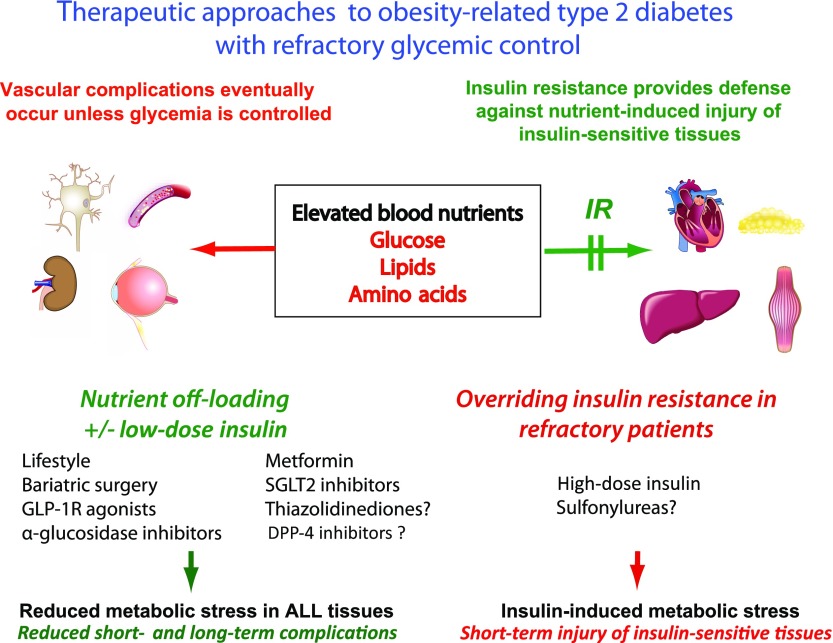Figure 3.
The potential benefit of nutrient off-loading approaches compared with the overriding of IR to lower blood glucose in subjects with poorly controlled T2D. Insulin-responsive tissues, such as the heart, skeletal muscle, adipose tissue, and the liver, are able to protect themselves from nutrient-induced damage by developing IR. Other tissues, such as nerves, eye, kidney, and the vasculature, are less protected by IR. The clinician has the choice to 1) treat the hyperglycemia with enough insulin to override IR and reduce nutrient toxicity in tissues at longer-term risk of microvascular complications but with the risk of increasing insulin-induced metabolic stress in the insulin-responsive tissues or to 2) use alternative nutrient off-loading approaches to glucose lowering to benefit all tissues. Insulin-induced metabolic stress is more likely to occur with high-dose insulin therapy in patients who are refractory to improved glycemic regulation. Sulfonylureas could potentially have similar effects to high-dose insulin as they increase insulin levels without effect to nutrient off-load. Bariatric surgery, GLP-1 receptor (GLP-1R) agonists, α-glucosidase inhibitors, and SGLT2 inhibitors have well-known mechanisms by which they nutrient off-load. Metformin likely detoxifies nutrients because it is a mild inhibitor of mitochondrial function that is thought to activate AMPK in liver and other tissues. TZDs, via promoting nutrient partitioning to adipose tissue, may nutrient off-load other more critical tissues. DPP-4 inhibitors do not appear to have nutrient off-loading effects.

